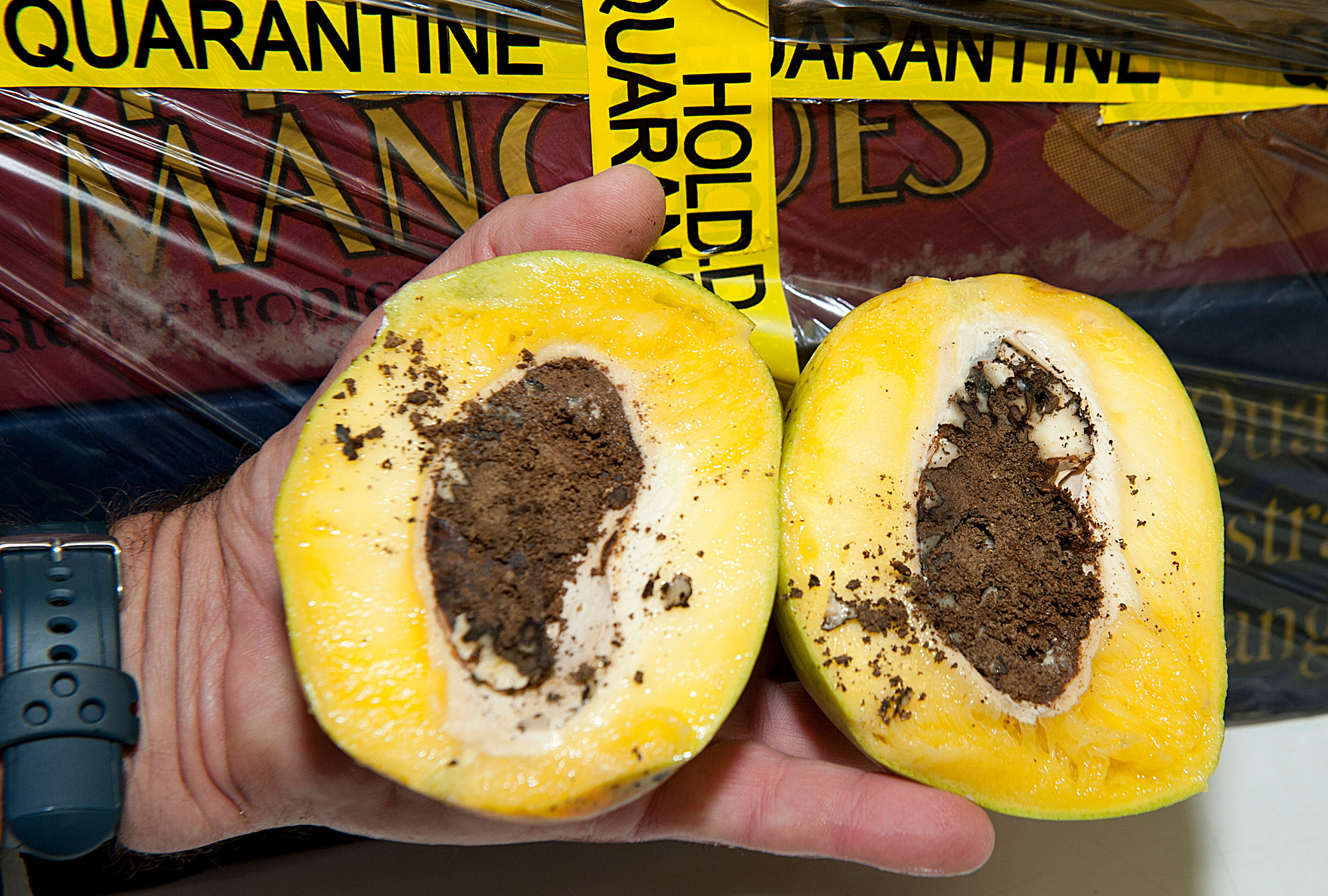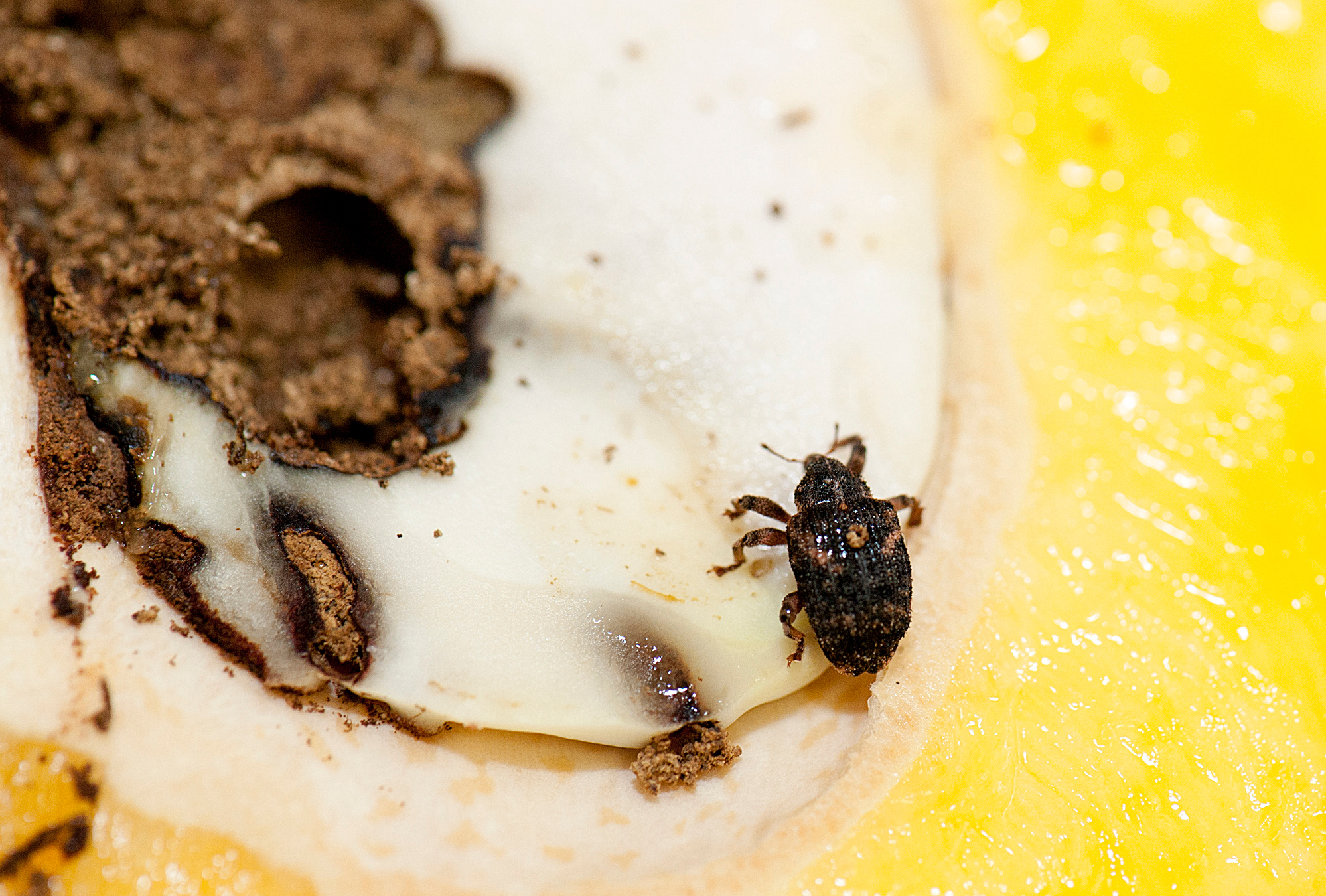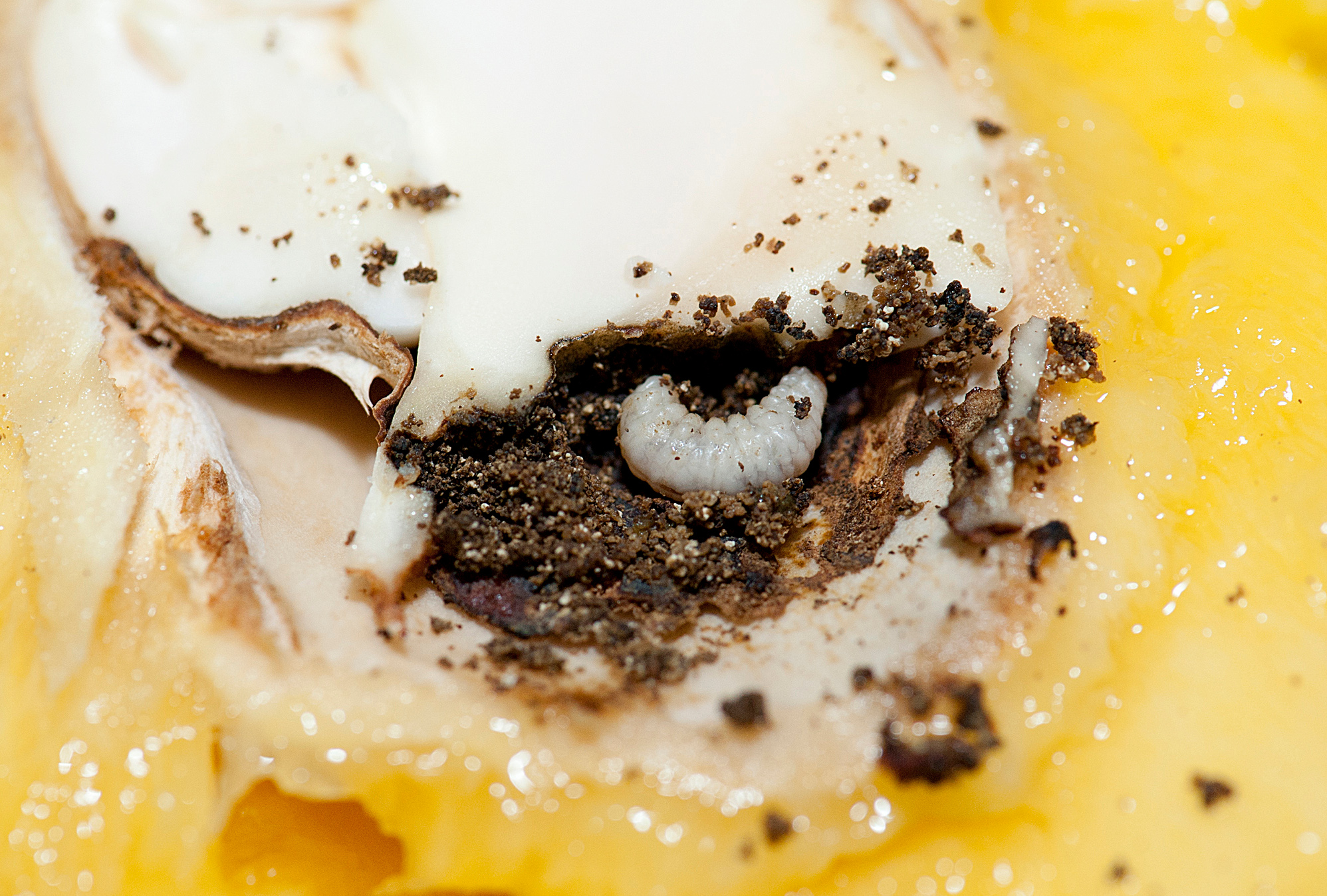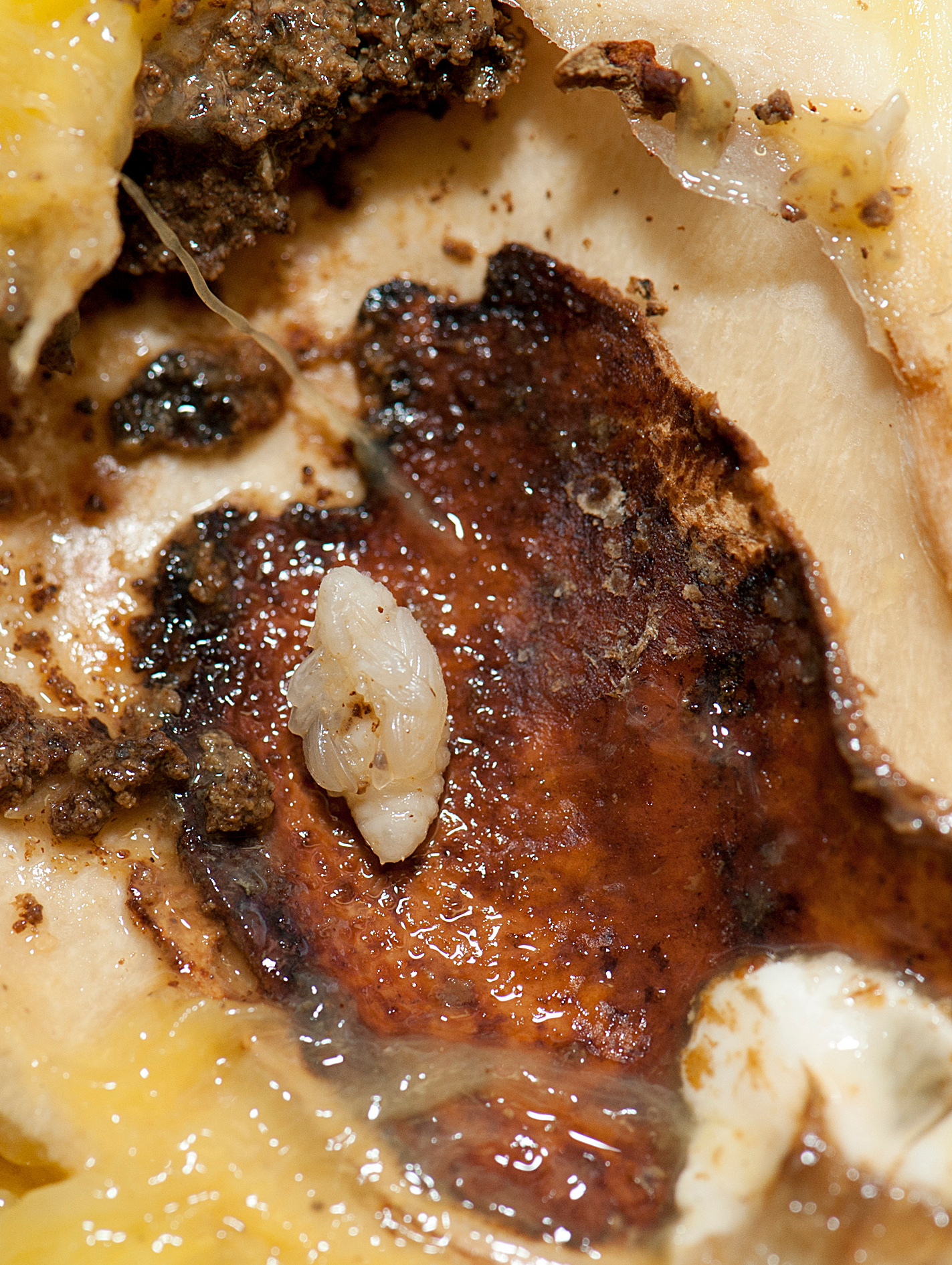
Mango seed weevil is a declared pest in WA
Mango seed weevil is not known to occur in WA and must be reported to DPIRD if found or suspected to be present in WA.
This pest has been detected in Queensland, New South Wales, and the Northern Territory. Early detection is critical to help project protect WA’s mango industry.
About mango seed weevil
Mango seed weevil, Sternochetus mangiferae, is a serious insect pest of mango fruit.
It affects the fruit and the seed and can cause significant production losses and cosmetically damage fruit.
The adult weevil is an oval shaped beetle, 7-10 mm long, and the larvae excavate cavities within the seed.
Mango seed weevil has a limited capacity for natural dispersal, and its extensive global distribution is attributed to the trade of infested fruit and seed.
This weevil is not known to occur in WA, so early detection of any suspect infestations will help protect WA mango growers.
Complete development of the mango seed weevil is only possible in mango fruit (Mangifera indica).
The duration of the larval period may be influenced by climate, location, host cultivar, soil chemistry, and humidity.
Mango seed weevil is rarely seen in the orchard. Infested fruits are difficult to detect.
- Egg laying sites are seen as brownish spots on the fruit rind which normally fade as the fruit ripens.
- Larvae develop within the mango seed and are rarely seen unless the seed is cut open.
- Evidence of its presence includes increased fruit drop, egg-laying scars and associated exudates on the fruit, as well as poor seed germination.

Mango seed weevil can cause significant losses both in the quality and quantity of mangoes produced.
- Severe infestations can cause 80% fruit loss in certain conditions.
- Significant egg laying can damage the appearance of the fruit causing it to be rejected at harvest.
- Damage caused by the weevil can reduce yield through premature fruit drop.
- Infestations can reduce the viability of seed, affecting nurseries wishing to grow seedlings.
- Adverse economic consequences arise for growers when large mango-importing countries impose quarantine restrictions on fruit from infested areas.

- After suspended development during non-fruiting periods, adult weevils become active and begin feeding on tender shoots and leaves.
- Females lay up to 15 eggs per day on small to medium-sized fruits but will lay on full grown fruit.
- Eggs hatch in 5-7 days and small larva burrow through the pulp to the young developing seed.
- Usual only one larva develops in a seed (rarely in the pulp) but as many as five have been found.

- As fruit and seed develop the tunnel and seed entry wounds are absorbed, making infested and non-infested seeds indistinguishable unless cut open.
- The larvae excavate cavities within the seed and pupate. The adult weevil then cuts its way out of the seed 4-8 weeks after the fruit falls and decays.
- Rarely, weevils emerge before fruit fall and eat through the ripe fruit flesh, ruining it.
- Adults emerge to crawl and seek sheltered hiding places under loose bark, in branches or crevices, remaining there until next fruiting season.
- Being poor fliers means limited natural dispersal of the weevil, so high infestations appear year after year in some locations.

WA's freedom from mango seed weevil is supported by general and specific surveillance, and specific import requirements to prevent its entry.
Legal duty to report
Mango seed weevil is not known to occur in WA.
Sternochetus mangiferae is a declared pest under section 12 of the Biosecurity and Agriculture Management Act 2007.
This means that any person who finds or suspects the presence of mango seed weevil must report it to DPIRD.
Report suspected mango seed weevil
Early detection and reporting will help protect the WA mango, horticulture and nursery industries.
If you find or suspect the presence of mango seed weevil, report it in one of the following ways.
References and related information
- Association of mango stone weevil with fruit drop in mango
- Diagnostic protocol for mango seed weevil (European and Mediterranean Plant Protection Organization bulletin)
- Effect of mango weevil damage on mango seed viability in Hawaii
- Integrated pest management for mango orchards using green ants as a major component: A manual for conventional and organic mango growers in Australia
- Literature review on mango seed weevil
- Mango seed weevil (CABI Compendium)
- Mango seed weevil (University of Florida)
- Pest and Disease Information Service (PaDIS)
- The distribution and biological observations of the mango weevil in Hawaii
- The effect of the weaver ant on the mango seed weevil in mango orchards in the Northern Territory of Australia
- Western Australian Organism List (WAOL)
